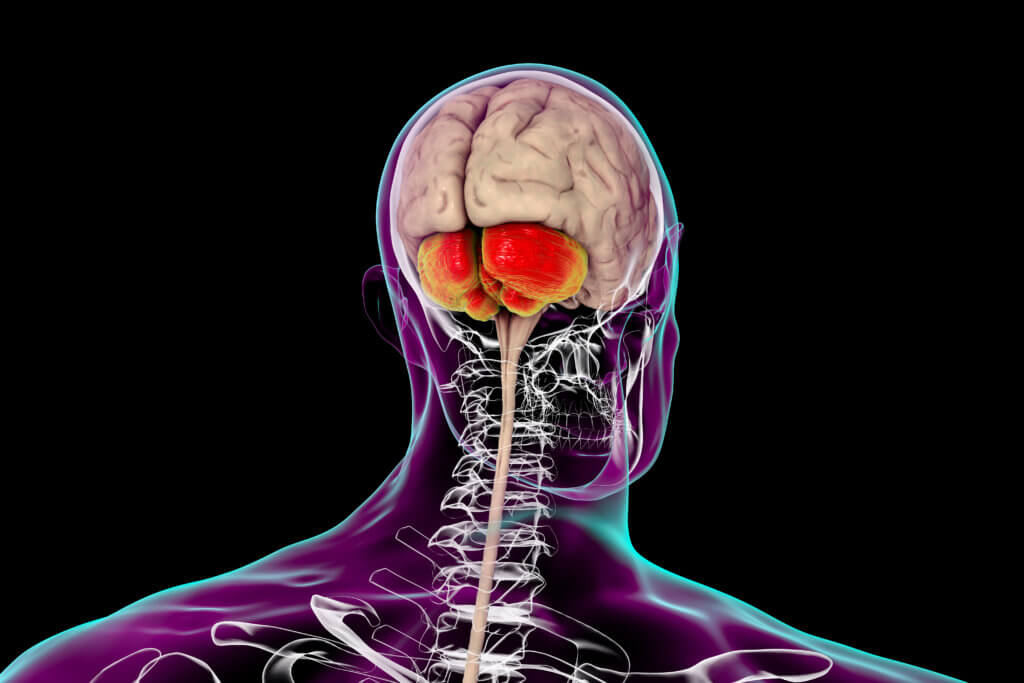For over half a century, neuroscientists have debated exactly how the cerebellum, a key part of the brain involved in motor control and learning, actually learns. The leading theory proposed that instructive signals are carried by climbing fiber inputs from the inferior olive to the cerebellar cortex, causing long-lasting changes in the strength of parallel fiber inputs to Purkinje cells, the main output cells of the cerebellum. However, definitive proof for this “climbing fiber hypothesis” has been lacking, with some studies even suggesting that changes in Purkinje cell output alone, without climbing fiber input, could drive learning.
Now, a new study from researchers at the Champalimaud Foundation and published in Nature Neuroscience provides strong evidence that climbing fibers do in fact provide the essential instructive signals for cerebellar learning. Using advanced techniques to selectively stimulate or inhibit specific cell types in the cerebellum of mice, scientists were able to conclusively show that climbing fiber activity is both necessary and sufficient for a form of associative learning called eyeblink conditioning.

In eyeblink conditioning, mice learn to blink in response to an initially neutral stimulus (like a light) that is repeatedly paired with a blink-eliciting unconditioned stimulus (like a puff of air to the eye). This type of learning depends on the cerebellum.
“In our experiment, we used a technique called optogenetics,” says study first author Dr. Tatiana Silva, from the Champalimaud Foundation, in a media release. “This method functions like a highly precise remote control for brain cells, using light to turn on or off certain cells of interest at extremely specific times.”
First, researchers showed that directly stimulating climbing fibers, mimicking their natural response to the unconditioned stimulus, was enough to drive robust learning when paired with the neutral cue, even if no air puff was delivered. Direct stimulation of the Purkinje cells could also drive learning. However, carefully varying the timing and intensity of Purkinje cell stimulation revealed that the learning effect did not depend on changes in Purkinje cell output, but rather on generating complex spike responses in Purkinje cells similar to those normally triggered by climbing fibers.
Having shown that climbing fiber activity is sufficient for learning, the team next asked if it is also necessary. They found that blocking climbing fibers during the unconditioned stimulus completely prevented learning, even though it did not prevent the reflexive blink response itself. This shows that without the instructive signal from climbing fibers, the cerebellum cannot learn to associate the neutral cue with the blink-eliciting stimulus.
“Climbing fibers normally respond to sensory stimuli like a puff of air to the eye. By precisely activating these fibers with optogenetics, we were able to trick the mouse into thinking it had received an air puff, when in fact it had not,” explains Dr. Silva. “After we consistently stimulated climbing fibers during the presentation of a visual cue, the mice learned to blink in response to that cue — even in the absence of stimulation. This proved that these fibers are sufficient to drive this type of associative learning.”

Perhaps most surprisingly, researchers discovered that simply expressing channelrhodopsin, a light-sensitive protein commonly used for optogenetic stimulation, in climbing fibers was enough to abolish learning, even without any light stimulation. This turned out to be because the protein expression subtly impaired the transmission from climbing fibers to Purkinje cells. Mice with this impairment could not learn when the cue was paired with an air puff stimulus, even though their reflexive blinks were normal. This serendipitous finding of “zombie neurons” — neurons that are alive but functionally altered — ended up being a powerful demonstration of the crucial importance of intact climbing fiber signaling for cerebellar learning.
These results provide compelling evidence that climbing fibers are the key instructive signal driving cerebellar learning, resolving a longstanding question in the field. When climbing fibers are activated by an unconditioned stimulus, the resulting complex spikes in Purkinje cells trigger changes in the strength of parallel fiber inputs that are active around the same time. Over repeated pairings, this allows the cerebellum to learn a timed response to the initially neutral cue.
“The remarkable thing was that these same mice learned perfectly well when we paired climbing fibre stimulation, instead of an air puff, to a visual cue,” notes Dr. Silva.
The new findings also help explain many previous puzzling results. For example, some studies had suggested that complex spikes are not required for learning, based on failure to find reliable correlations between complex spike activity and learning. The current work shows that even subtle disruption of climbing fiber signaling, without obvious effects on baseline complex spiking, can dramatically impair cerebellum-dependent learning.
A key next step will be to investigate in more detail how instructive signals are encoded in climbing fiber activity patterns to drive the full range of behaviors that depend on the cerebellum, from motor coordination to cognition and social processing. With more precise tools now available to monitor and manipulate specific cerebellar elements, the field is poised to make rapid progress.












Missing a lot of context here:
What are climbing fibers?
What does the cerebellum do in relation to these fibers?